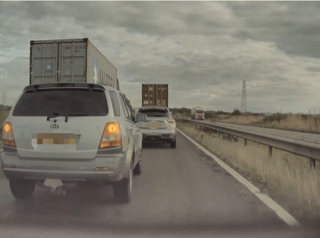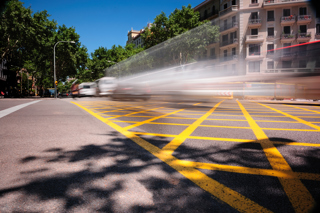The Government has decided to commission a study into drivers being dazzled by headlights in response to an online petition about the issue.
It comes after research from the RAC showed that drivers claiming the glare from headlights is getting worse.
The RAC has been surveying drivers on dazzling headlights since 2018, but new findings from a survey of 2,000 drivers suggests that 85% believe it is more commonplace.
The survey also found that 89% of drivers think at least some headlights are too bright, of which three-in-10 (28%) – the highest recorded – think most are.
Of the drivers who complained about the brightness of car headlights, some 91% said they get dazzled when driving, with three-quarters (74%) saying this happens regularly.
Responding to the petition set up by a member of the public following campaigning on the issue by the RAC, the Government said: “Recognising the need for further evidence (regarding headlight glare), we intend to commission independent research shortly.”
It said that all vehicle headlamps are designed and tested to follow international standards to ensure that they are both bright enough to illuminate the road but do not affect the vision of other road users.
“The standards define the beam pattern and include maximum and minimum light intensities,” it added.
“We know that lots of people raise concerns about headlight glare – but also that the police collision statistics don’t show any underlying road safety issue.”
Due to that lack of evidence, the Department for Transport (DfT) raised the issue at the United Nations international expert group on vehicle lighting.
Proposals to amend headlamp aiming rules were agreed in April 2023, together with requirements for mandatory automatic headlamp levelling which automatically corrects the aim of the headlamps based on the loading of the vehicle e.g. when passengers are sat on the back seat or there is luggage in the boot.
The statement continued: “The transitional provisions permit sufficient time for vehicle manufacturers to redesign their products and adapt the manufacturing process, with the tighter tolerances expected to come into effect in September 2027.
“Once implemented, these tougher requirements will help alleviate the number of cases where road users are dazzled.”
In addition, the DfT says it also plans to commission independent research to better understand the root causes of driver glare and identify any further appropriate mitigations.
RAC road safety spokesperson Rod Dennis said: “The fact the Government has listened to drivers’ concerns and heeded our calls to examine the complex issue of headlight glare in more detail marks a real turning point.
“The topic has undoubtedly struck a chord with motorists up and down the country, with many people contacting us directly to call for something to be done.”
Brighter headlights, while giving drivers a better view of the road ahead, are clearly causing other road users significant problems, explained Dennis.
“As many as nine-in-10 drivers tell us they believe at least some car headlights are too bright, while 14% of drivers aged 65-plus say they have stopped driving altogether as a result of being dazzled,” he added.
“An independent study provides a golden opportunity for the Government and industry to get to the bottom of the problem, identify the factors involved and map out a way forward.
“We’re aware of regulatory changes being made at an international level that will hopefully make a difference in many years to come but are concerned that these alone may not be enough to address headlight dazzle.”
The RAC says that there are also known shortcomings concerning the official road casualty data not accurately capturing the true number of incidents associated with headlight glare.
“We look forward to working with the Department of Transport to help ensure the study is as robust as possible and drivers’ voices are heard,” said Dennis.
Baroness Hayter says the decision to commission an independent study is a victory for all those drivers affected by glare who’ve complained to their MP, signed the parliamentary petition or who have sought help from an optometrist only to discover the problem was with headlights and not their eyes.
She concluded: “This is an issue the RAC has long campaigned on and I am delighted the Government has recognised there is a real problem. We look forward to discussing its research in due course.”


























ertowerty - 03/04/2024 09:58
I agree that headlights are too bright. Modern optics produce a sharp cut-off between high illuminous intensity and darkness and an undulating road surface will cause even the most correctly aligned lights to emit light above the cut-off point. Road gradients exacurbate this situation. THe most sophistacted leveling system in the world will not be able to compensate for these situations. Why are headlights required to be on where road lights are present and working? Diffused running lights should be adequete. Correctly designed street lighting is more than capable to illuminating the road and its environs. A further factor is that with modern cars, people expect hte car to do everything for them, inclding selecting the most appropriate lights to use, how often do you see a car at night travelling on front running lights? Anyone remember the TV advert of the 1960's Wear something white at night, aimed at pedestrian safety? The vast majority of pedestrians dont come fitted with any type of light. The human eye is designed to operate in varying levels of light including low light conditions, we should wonder how WW2 fighter and bomber pilots mamaged to go about their business, so lets all get used to lower lighting levels again.Just because we have the technolgy to produce massive amounts of light, it dosn't mean we have to. Let our eyes work in night vision mode for a change.